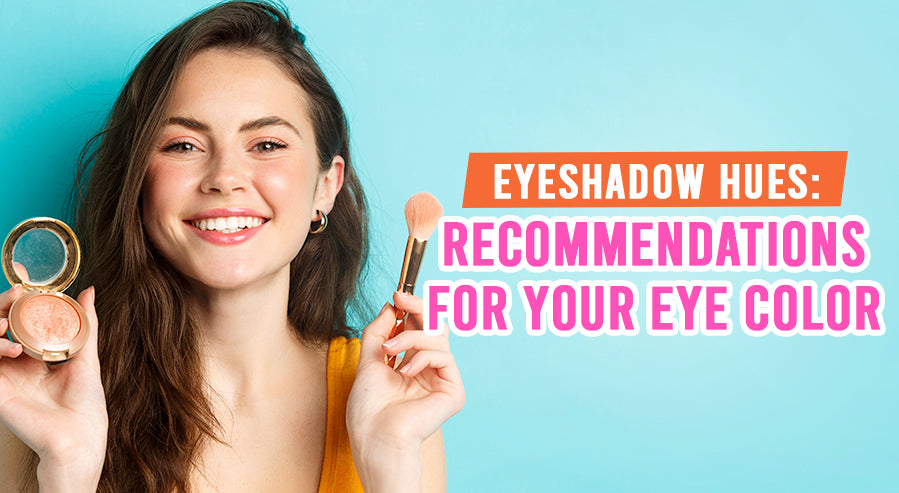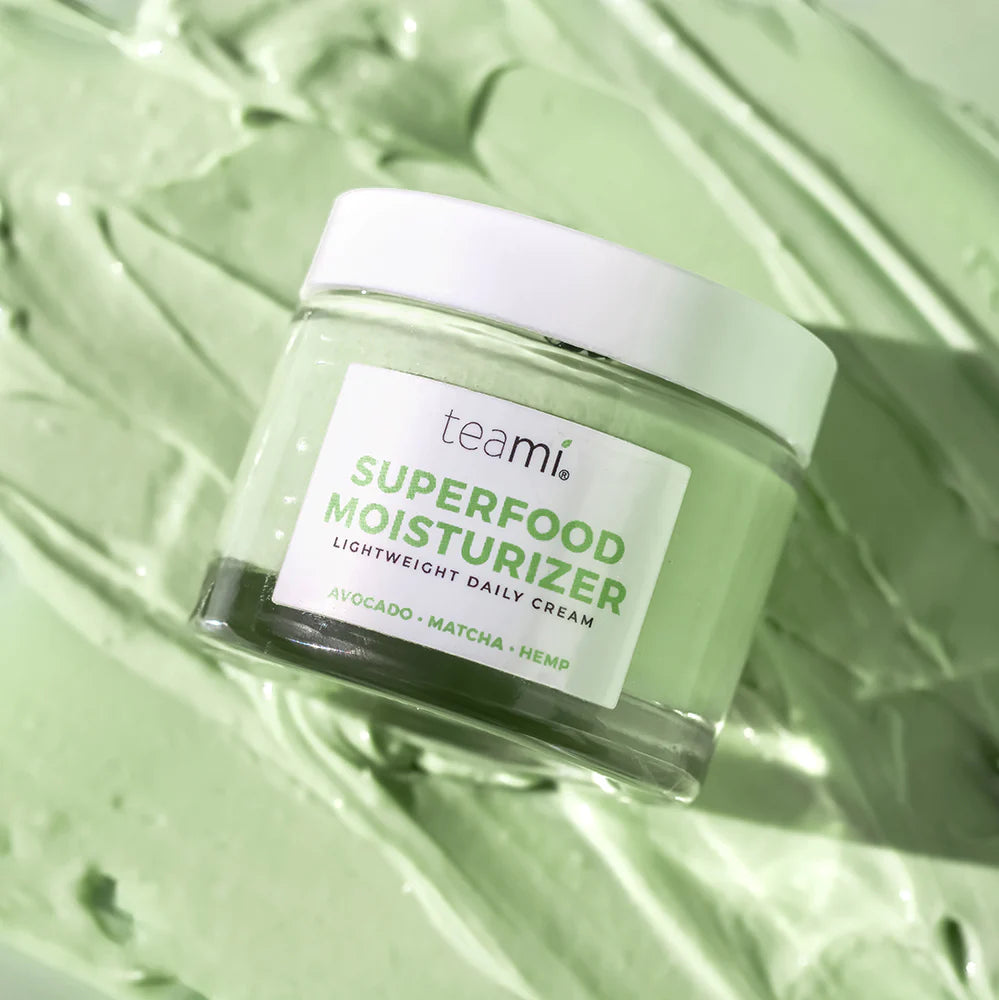Eyeshadow Hues: Recommendations for Your Eye Color

Looking good is always a challenge in today's society since the standard of beauty is always evolving. Sometimes, the issue involves physical traits like height or weight, and other times, it is a problem of enhancing your features. Altering your appearance to suit the needs and standards of modern society can be frustrating, but certain aspects of modern cosmetics bring joy to enthusiasts.
One of the main features of today's beauty standards is makeup, which hides blemishes and accentuates certain facial features. Women and men commonly use foundation, lipstick, and eyeliner to improve their aesthetics. Some people apply makeup to look more attractive, while others do it because it makes them happy. Regardless of the reason, certain aspects of makeup application are more complicated than people realize.
One of the most common forms of makeup is eyeshadow, which seems simple at first glance but is more complicated. Eyeshadow, like all makeup, comes in various shades and intensities that alter its effect on your complexion. While eyeshadow is designed to frame your eyes, it requires coordination with a feature you cannot change with makeup.
Genetic factors determine your eye color and cannot be altered or covered with cosmetic tools. As a result, any eyeshadow you use must mesh with your natural eye color, or it will seem unnatural on your face. Fortunately, there is a well-established standard for eyeshadow coordination, depending on your eye color.
What Affects Hue Coordination?
Our eye color is determined by genetic traits inherited from our parents, with some colors being more common than others. Once upon a time, blue was the most coveted eye color due to its nature as a relaxing color. However, all eye colors have their benefits, and there are some who have extremely unique eye colors.
One major issue is that some people have a condition called heterochromia iridum, which causes one eye to be a different color than the other. Having 2 differently colored eyes can make applying eyeshadow even more complicated, but it is still possible to successfully enhance your appearance while coordinating your eye color to an eyeshadow hue.
The trick is knowing what affects the hues that best suit your eye color. Eye colors refer to the irises, the circle of color within the sclera (the white part of our eyes), and around the pupil (the black dot in the center).

Iris colors are fairly diverse but can be classified as being one of 7 different colors:
- Amber
- Blue
- Brown
- Gray
- Green
- Hazel
- Special (red or violet)
The different iris colors have virtually no bearing on our health or ability to see, though individuals with red or violet eyes tend to have a harder time with their vision. Regardless, each iris color falls into one of 3 categories that affect how well they mix with other hues and colors. These categories are:
- Warm: Warm colors are bright and usually exude energy and passion. Warm eye colors include green, amber, and hazel eyes, usually accompanied by golden flecks.
- Cool: Cool colors are softer and express calm emotions. Cool eye colors include blue, green, and gray without the aforementioned golden flecks.
- Neutral: Neutral colors are between warm and cool colors and do not reflect emotion very well. The only neutral eye color is brown.
Each iris color has its own traits; some are more desirable than others, but we cannot choose our eye color. Fortunately, we can still enhance their features by complementing them with eyeshadow and eyeliner. Insofar as the former is concerned, knowing what eyeshadow hue matches our eye color is essential to maintaining a coherent look.
The Best Eyeshadow for Brown Eyes
The most common eye color in the world is brown, which is not ideal for everyone since many consider brown to be dull. Nevertheless, brown eyes are common enough that it was once believed to be the only eye color 10,000 years ago. Nowadays, 55-79% of humans have brown eyes.
Fortunately, brown eyes have the distinct benefit of being one of the easiest to match with a hue. Brown goes with many colors, but insofar as makeup is concerned, they fall under the category of neutral eye colors and are easier to pair. The main reason eyeshadow is used is to accentuate our eyes and make the irises more noticeable for the sake of appearance.
Accentuating brown eyes is a little more challenging since they tend to have less saturation than other colors. Therefore, the main focus for your eyeshadow should be something that adds a little more color to the area around your eyes.

The most commonly recommended hues for people with brown eyes are:
- Bright Green or Blue: These hues will add more color to your eyes while accentuating the brown of your irises.
- Deep Purple: Deep purple eyeshadow complements brown eyes with golden flecks, which is slightly more common nowadays.
- Brown: Using brown eyeshadow slightly brighter than your irises will naturally mesh with your eyes and accentuate them.
- Orange: Orange eyeshadow adds a warmer tone to neutral brown eyes, helping add more depth to your emotional expressions.
The Best Eyeshadow for Blue Eyes
Despite being a recessive trait, blue eyes are the 2nd most common eye color worldwide, with 8-10% of people having this particular eye color. Blue eyes were once one of the most desired eye colors, though this notion soured somewhat after World War II. Regardless, blue eyes remain an excellent eye color to have and can be enhanced with various eyeshadow hues.
Unlike brown eyes, blue eyes fall under the category of cool colors, meaning the best course of action is to use warm hues to add more energy to your eyes. Most eye colors have a specific complementary color that best suits them, though this trait is absent with neutral eye colors. For blue eyes, the most effective color is orange.
Using orange eyeshadow with blue eyes can add warmth and depth to an otherwise cold eye color.

That said, there are other options:
- Peach: Peach eyeshadows add a little extra energy to the eyes and restore youth to your face.
- Pink: Oddly enough, a light pink can add a crispness to your eyes that makes them pop and better showcases the blue.
- Blue: While it might seem like putting a hat on a hat, blue eyeshadow can enhance the vibrance of your eyes and complement your natural blue tone.
The Best Eyeshadow for Hazel/Amber Eyes
Hazel and amber are remarkably similar in terms of color and are the 3rd most common eye colors. Approximately 10% of the human population has either hazel or amber eyes, though the exact percentage for each is unknown. Amber and hazel eyes are considered some of the most attractive since they fall into the category of warm colors.
As a result, individuals with these eye colors tend to have more inviting expressions than those with cooler colors. Unfortunately, hazel eyes are particularly difficult to accentuate since they have a habit of changing depending on certain factors. Hazel eyes are a combination of green and brown, meaning they tend to adapt to the clothes we wear or the climate around us. Fortunately, some eyeshadow tones go well with these eye colors.

The hues in question are:
- Brown and Gold: Since hazel and amber eyes have hints of brown, they tend to mesh well with certain hues that suit the latter. Adding brown eyeshadow mixed with gold can accentuate the green and brown in hazel eyes.
- Pink: Pink eyeshadows mesh well with hazel and amber eyes, and you can use pinks from the warm or cool sides of the spectrum.
- Burgundy: Burgundy is essentially an earthier red that effectively complements the brown in hazel and amber eyes.
The Best Eyeshadow for Green Eyes
Green eyes were once the rarest eye color but have since been dethroned by slightly more unusual irises. Nevertheless, only 2% of people worldwide have green eyes, which is considered one of the most attractive eye colors we can have. Green eyes are interesting since they can either be a cool or warm eye color depending on the presence of golden flakes in your irises.
Like blue, green has a complementary color on the wheel that effectively enhances the appearance of green eyes. Oddly enough, green's complementary color appears to be the exact opposite since red is the most compatible. This is probably part of why Christmas leans into mixing red and green together for decorations, but cosmetically, it determines what kind of eyeshadow you can use.
Unfortunately, not everyone is willing to do their makeup like a holiday special, so alternatives are needed. Fortunately, several potential hues suit green eyes almost as effectively.

These hues include:
- Deep Purple: Similar to brown eyes, purple eyeshadows can enhance the depth and drama of green irises and enhance their warmth.
- Brown: Green is typically associated with earthy themes like grass and trees, so combining green eyes with brown eyeshadow can enhance this look. This combination improves the depth and emotion in green eyes without going overboard.
- Green: Like with blue and brown, green eyeshadow can accentuate green eyes, but you should try to get a shade that is as close to your iris color as possible.
The Best Eyeshadow for Gray Eyes
Gray eyes are the rarest in the world next to red and violet, but the latter result from albinism and are not sought after. Gray eyes account for less than 1% of the human race's eye colors and are among the most interesting. Gray is a cool color, meaning it does not display as much warmth or emotion as warm colors and is even less inviting than blue.
Nevertheless, gray eyes are full of potential concerning cosmetic enhancement. Despite being much lighter than blue, gray's complementary color is the same, so orange eyeshadow is a popular choice. The orange provides a warmth that can offset the typical cold look seen in gray eyes.
Gray eyes benefit from the same tones as blue because gray tends to accentuate the bits of blue found in the iris. As a result, gray eyes tend to appear blue from a distance and inadvertently share the benefits of eyeshadows that accentuate blue eyes.

Insofar as red and violet are concerned, matching eyeshadows for those irises is remarkably difficult. Anyone with these irises suffers from an extremely pale complexion, and our skin tone directly affects the types of eyeshadows we can use. A very fair skin tone can prevent us from using cooler eyeshadows since they blend with our natural skin color.
Conversely, too dark eyeshadows can clash with fairer complexions, meaning a middle ground must be identified. Unfortunately, few hues can accentuate red or violet eyes, and a specialist shop is usually necessary to find the proper product.
Finding the Right Blend
Finding the right eyeshadow for your eye color can be extremely difficult or laughably simple. The more common eye colors tend to have a wider assortment of products available, while rarer colors are harder to shop for—nevertheless, every natural eye color meshes with a hue of eyeshadow.
The challenge is finding the proper shade to enhance the vibrance of your eyes. Unfortunately, there is another challenge associated with accentuating your eyes that has nothing to do with the irises. The skin around the eyes, and your complexion in general, must be carefully maintained to avoid making the eyeshadow too prominent.
We at Teami believe in natural solutions for cosmetic issues, including ensuring your skin does not clash with your eyeshadow. While we do not sell makeup, we do provide natural substances and tools that can revitalize your complexion and make it perfect for your eyeshadow. One of the biggest threats is hyperpigmentation or other conditions that affect your skin tone.

Fortunately, we have products specifically designed to keep your complexion level. Our best seller for this is our Bright, Dark Spot Serum, which uses vitamin C and azelaic acid to remove dark spots from your skin and restore a level complexion. We encourage you to visit our website and try our product directly. After all, finding the right blend is a Teami effort.
Subscribe to our Newsletter
Subscribe to our newsletter and get 10% off your first purchase
 Instagram
Instagram



